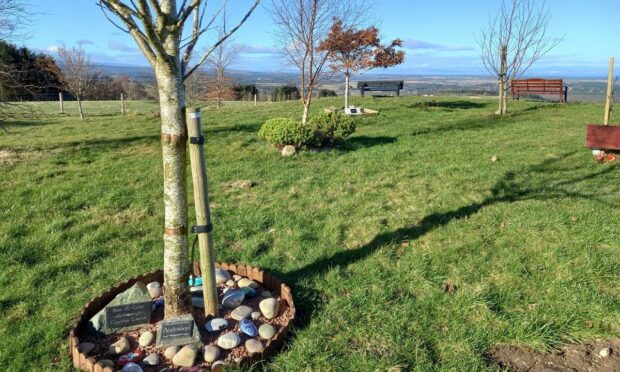Moray Council has warned any new memorial tributes at Califer Viewpoint will be removed from this month to protect the area.
Residents have been reminded that new memorial trees, flowers and plaques are not permitted at the beauty spot near Forres.
The decision to stop allowing plantings and memorials was made in 2014 after the viewpoint became “over-populated” by the tributes.
Following an audit recording the current trees and memorials, the council has confirmed any new additions will be removed from March.
Moray Council‘s open spaces manager, James Hunter, explained that residents are continuing to lay memorials at the viewpoint without permission are causing “detriment” to the area.
He said: “The council has carried out an audit of all plantings and plaques that are currently in place and these will remain in situ.
“However, to protect the views from Califer Hill and the overall appearance of the beauty spot we must ask people to refrain from adding new tributes to the area.
“It’s lovely to see so many people remembering loved ones in an iconic Moray spot, but I urge people to refrain from planting or installing plaques without permission to avoid any distress when they are removed.”
Moray Council headstone stabilisation
Meanwhile, the local authority is also resuming inspections of headstones in cemeteries across Moray this month.
The work ensures that cemeteries are a safe place for visitors and staff. However, inspections were paused during the Covid pandemic.
The inspections will not prevent public access or use of the cemeteries, which will remain open throughout.
A “gentle” hand test is used to assess the condition of memorial headstones. If the headstone shows no signs of instability it is recorded as safe.
If the headstone is found to be unstable and in danger of falling over, it will be made safe and the lair holders will be contacted. They can then decide to either leave the stone or pay to have it repaired by a trained mason.
When a headstone is found unstable but not imminently dangerous, the council will write to the lair holder’s last known address.
In these cases, a “discreet” safety cordon may be placed around the headstone for safety reasons.
Mr Hunter added: “Members of the public are free to approach staff while they’re in cemeteries if they have any questions, we just remind people not to do so while an inspection is being carried out, for safety reasons.
“We’ll be in touch with any lair owners should we find any issues following this sensitive safety work and ask that the discreet safety signage and cordons are not removed until headstones have been made safe.”
